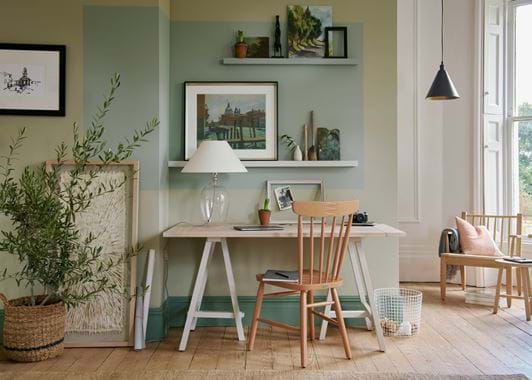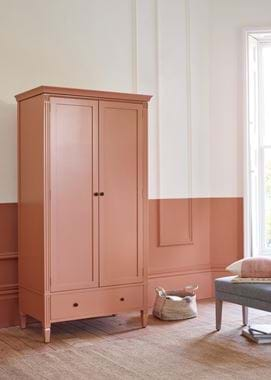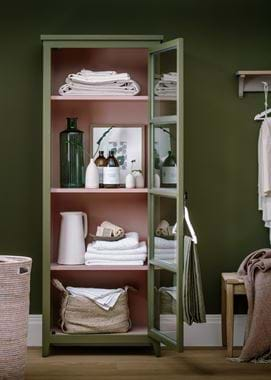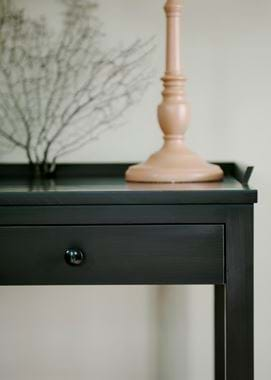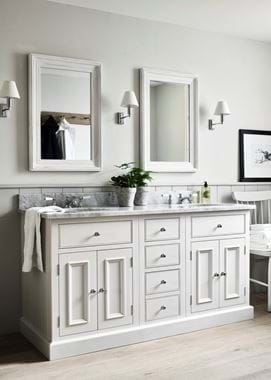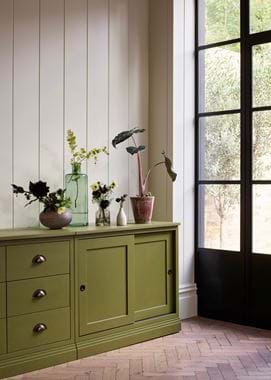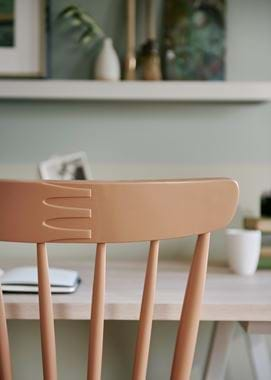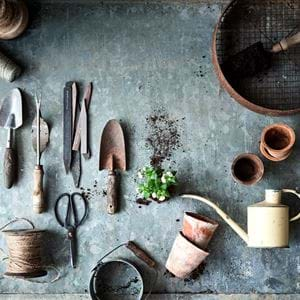Different types of paint, explained
Different types of paint, explained
The world of paint finishes can be a little complicated. Eggshell, emulsion, gloss, limewash, distemper…it can be hard to know which formula you should choose for the area you’re painting and the effect you’d like to achieve. Which is why, just as the number of paint colours in our collection is edited for choice but not confusion, so have we kept the finishes on offer simple: eggshell and matt emulsion, the two finishes that you can use on practically any and every surface, and that’ll always look timeless. (In our collection, they’re both also water-based and very low in VOCs, which means less chemicals, less smells and easier cleaning up.) Here, we’ll talk you through the difference and why you might want to use one over the other.
Matt emulsion
This is the finish that you’ll see on most walls in most homes nowadays. It creates a flat look (any sheen will be negligible) that means, should you have any slight lumps and bumps on your wall, they’ll be visually evened out with less in the way of shadows or highlights to give them away. That said, a good blend with plenty of pigment like ours won’t feel flat when it comes to the depth of colour: matt emulsion lends a chalkiness to pale colours and a soft but deep tone to dark ones and, in both cases, it’ll change over the course of the day, taking on gentle tonal differences depending on the light.
While emulsion might be the preferred paint for walls, it’s not necessarily the best choice for woodwork and other high-traffic areas. That’s because, in order to achieve the very low sheen levels, the proportion of resinous binders to powdery pigments is lower and, not only do these binders create shine, but they also create durability. Similarly, matt emulsion isn’t always suitable for steamy bathrooms as it can be marked by water droplets. In all these cases, you might want to choose a slightly higher sheen finish, which is where eggshell comes in.
In short, use matt emulsion on: interior walls, woodwork and metal. Best not to use on: high-traffic areas such as skirting and doors, and steamy rooms.
Eggshell
Eggshell formulas can vary widely in terms of shine level from maker to maker, but ours will create a relatively low 15% sheen finish. It’s a good balance of shiny enough that it makes for a more hardwearing paint than matt emulsion, but not so shiny that it picks up on every lump and bump (so, although it’s not as chalky as emulsion, you can still use it on walls that aren't quite perfectly smooth). And, because it’s not vastly visually different from emulsion, it won’t make a dramatic statement when they’re used side by side – even if you’re painting the same shade on adjoining walls and woodwork. Eggshell is our choice of finish for all our painted furniture and kitchen cabinets too, and it’s what we’d recommend if you’re repainting pieces at home. You can also wipe it down with a slightly damp cloth, making it all the more practical.
In short, use eggshell on: interior walls, woodwork and metal, including high-traffic areas, kitchens and bathrooms. Best not to use on: nowhere, except where you want a very matt, chalky finish.
A quick note on primer
We have one, multipurpose primer in our collection. It’s designed for using on walls and woodwork, and is especially useful if you’re painting a lighter hue onto a dark or uneven (in terms of colour) base. You may want to use a more specialist primer in some cases though, such as a radiator primer or a stain-blocking one for very resinous wood, both of which are readily available online and in DIY stores.
Finishes decided, head here for our guide to painting that’ll help make sure you get a perfect finish.

